
Monday, October 10, 2011
Tips for Buying a Used Glock Patrick Sweeney | Oct 06, 2011
Personally not a fan of Glock; but here is some information.
Not everyone buys new guns. A used firearm can have a great deal of useful life left in it, provided it had a decent amount of care from previous owners. Glocks are not different in that regard. A horribly abused Glock may not be worth much even as a parts gun. (Unless, of course, that horribly abused Glock is the only firearm you can lay hands on in the city of Dirt, Carjackistan, when the terrorists are trying to kick down your hotel room door. Then it may be literally worth its weight in gold or more.) A like-new-in-the-box used Glock may not cost much less than a brand-new Glock.
However, the durability of Glocks, and the lower percentage of their owners who experiment with them, tends to mean more Glocks survive in good shape than other firearms. Should you be offered a used Glock for sale, the main dance is settling on a price. There is hardly anything on a Glock that can’t be repaired, replaced or factory upgraded, and many of the factory upgrades are free. As a result, advice on buying used Glocks tends to be a lot less involved than that of buying other firearms.
If you drop your Glock slide, it can bend if it lands on the muzzle end extension for the recoil spring. Check this area before buying a used Glock.
What you are looking for are bargaining points. The small ones are things that are wrong or need upgrading, things that the factory will take care of free or at little cost. A G-17 with the old trigger parts can be fixed for free by Glock, but the same repair with new parts that have been experimented on will cost you should you send them back to Smyrna.
First, give the used Glock a good visual external inspection. Look to see if there are any signs of abuse, neglect and/or experimentation. External abuse would be things like the corners of the slide being chewed up and or dented from being dropped. Dropping the slide when it is off the frame can bend the recoil spring retaining tab or the relatively fragile (for a Glock) back ends of the rails in the slide. Neglect would be indicated by rust (rare) or a cracked slide from too many hot reloads (even rarer). Experimentation would be something like the slide being machined to take some other sight system than the factory one or milled for ports other than factory.
The good news is that the cracked slide might well be replaced by the factory for free or at little cost. The others? You’re on your own. Glock isn’t going to help you with a dropped slide, and the one that was machined will have a voided warranty. Don’t worry about the factory sights; Glock sights are cheap and easily replaced. At the current pricing, an armorer’s cost for a new set of sights is only $3!
Checking the Glock action. The safety plunger is blocking the firing pin.
A scarred and chewed-up frame can be cleaned up but Glock won’t replace it just because it got scraped along a curb during a fight. It will replace it, regardless of condition, if it is one of the E‑series Glocks that were made from September 2001 through May 2002.
With the permission of the owner, cycle the slide and dry fire it. Try firing it without depressing the trigger safety. It should not fire. Try pulling the trigger normally and then hold it back and cycle the slide. Does the trigger return when you subsequently release it? If not, it may be due to a broken/bent trigger spring or a “trigger job” gone awry. The parts don’t cost much, so bargain the price down as much as you can but don’t expect the owner to budge much.
The firing pin being cocked.
Disassemble and inspect the slide and barrel. Is the barrel clean? Unmarred? Look down the bore. Do you see dark rings? Those are bulges in the barrel from lodged bullets being shot free. A new barrel costs money. At the armorer’s cost, a Glock barrel runs $95 to $125, with compensated barrels running up to $140. Aftermarket Match barrels can run up to $200. If the barrel is bulged, bargain hard, for a replacement won’t be cheap.
Look at the slide, in the breech face area. Inspect the area around the firing pin slot.
The firing pin fully forward.
In a very high-mileage 9mm, fed many rounds of +P or +P+ ammo (as some police departments use), you may find the area around the firing pin slot eroded or even peened back. The erosion comes from pierced or blown primers jetting hot gases back at and through the firing pin slot. If you find those signs you should remove and check the firing pin to make sure it is in good shape. The peening comes from the high pressure setback of the primer. The wall between the breechface and the firing pin tunnel isn’t thick (it can’t be) and the repeated hammering from a steady diet of P or +P+ loads can peen it back. Yes, the Tenifer makes the slide hard, but the substrate isn’t hard or thick. If the area is made too hard by Glock, it may break. If it is too soft, it may peen. It must keep Glock engineers awake at night, worrying about it.
Read more
Subscribe to:
Post Comments (Atom)
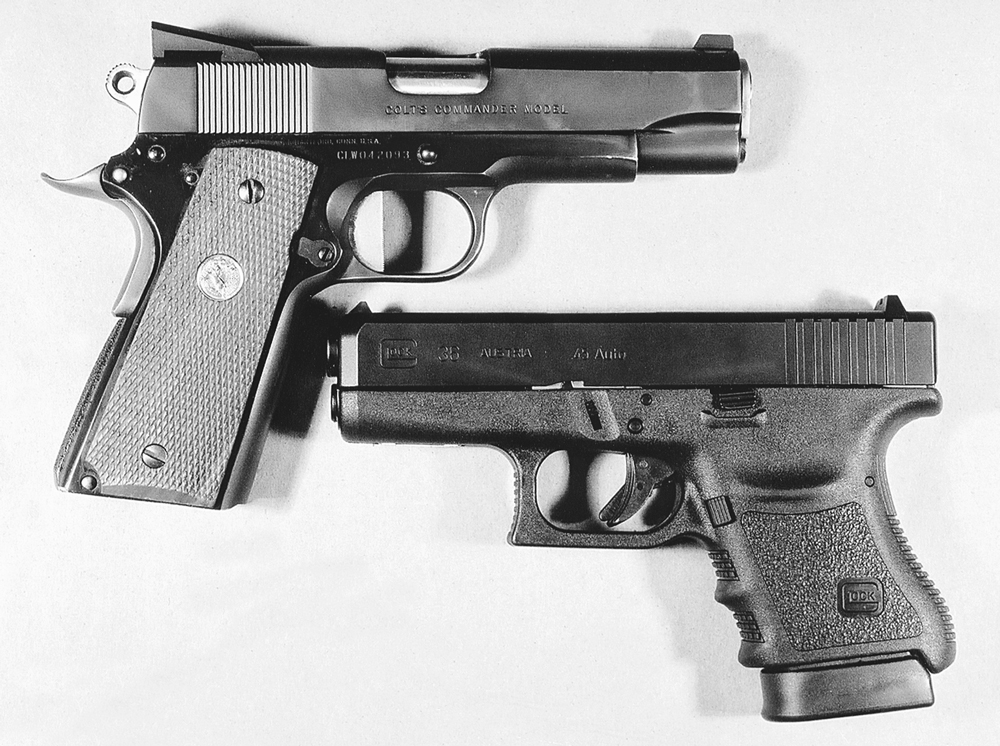
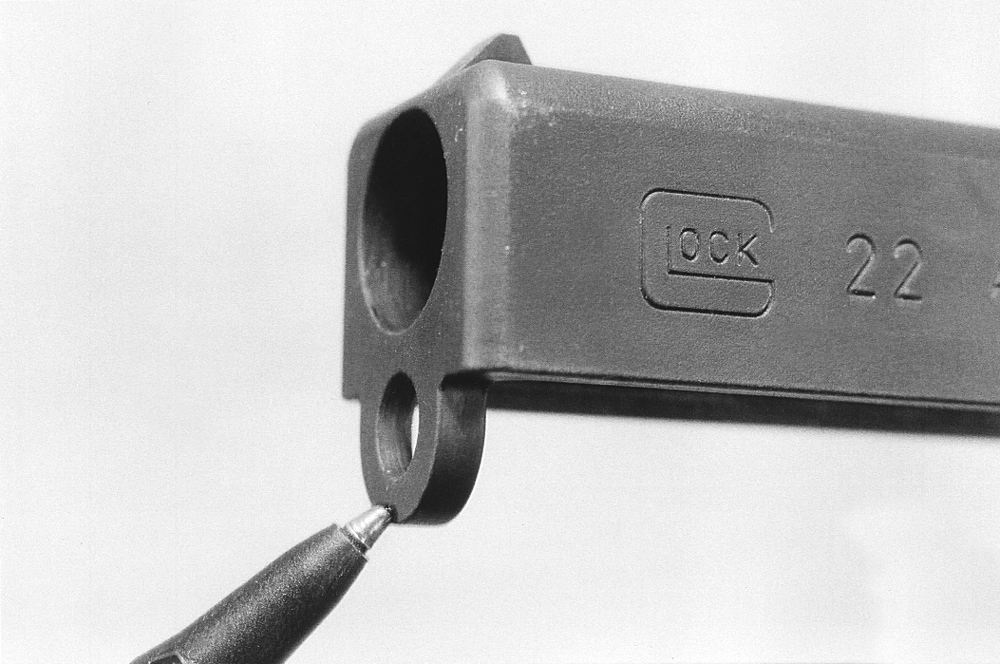
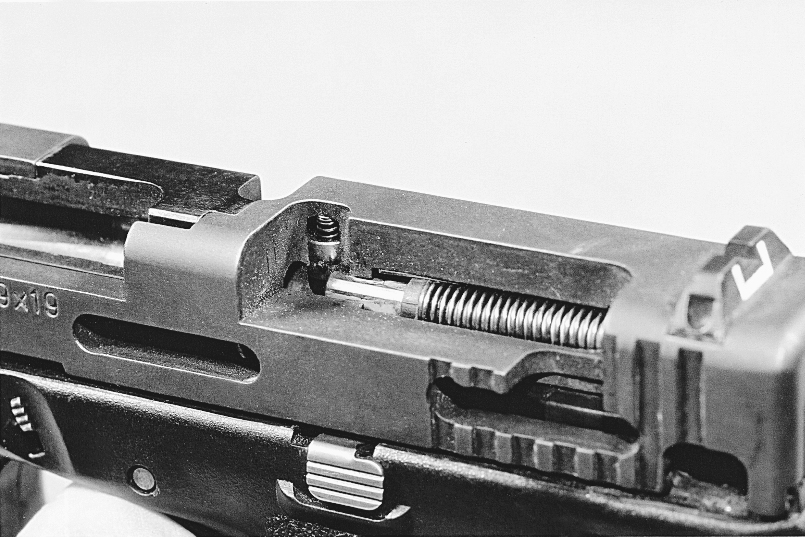
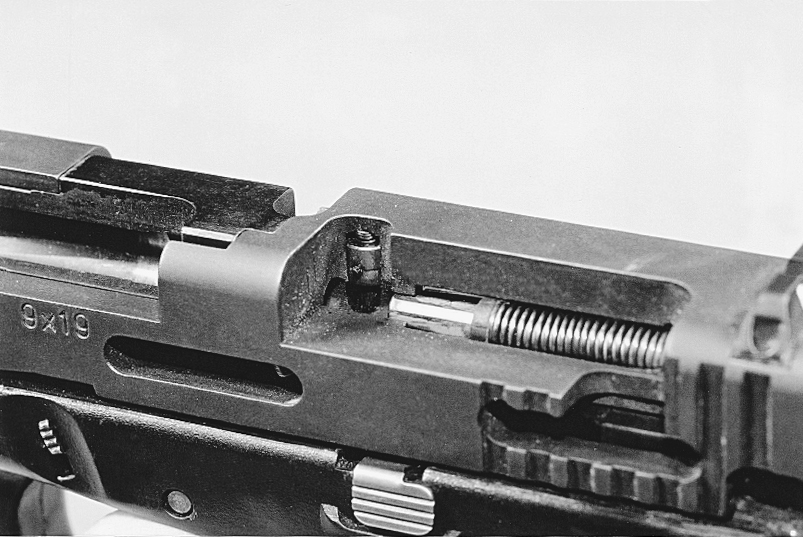
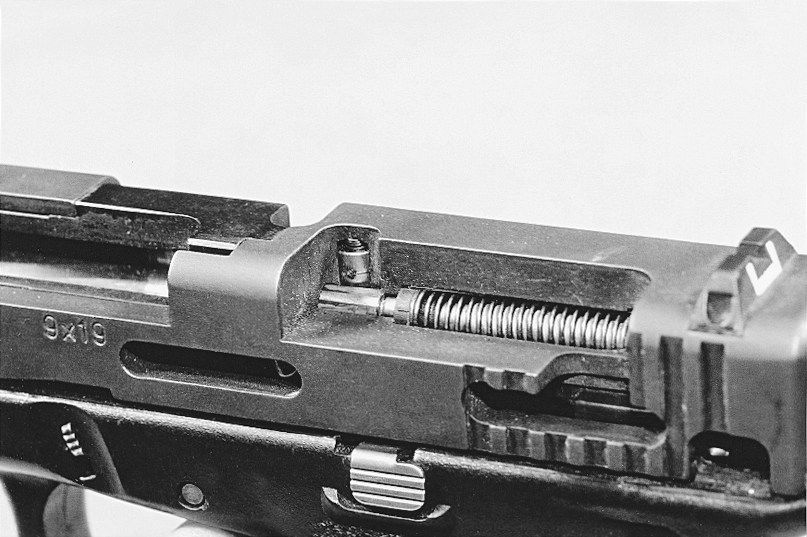
No comments:
Post a Comment